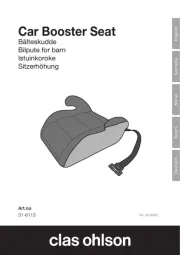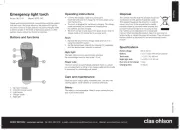Clas Ohlson 30-7724 Manual
Læs gratis den danske manual til Clas Ohlson 30-7724 (20 sider) i kategorien Ikke kategoriseret. Denne vejledning er vurderet som hjælpsom af 18 personer og har en gennemsnitlig bedømmelse på 4.1 stjerner ud af 9.5 anmeldelser.
Har du et spørgsmål om Clas Ohlson 30-7724, eller vil du spørge andre brugere om produktet?

Produkt Specifikationer
| Mærke: | Clas Ohlson |
| Kategori: | Ikke kategoriseret |
| Model: | 30-7724 |
Har du brug for hjælp?
Hvis du har brug for hjælp til Clas Ohlson 30-7724 stil et spørgsmål nedenfor, og andre brugere vil svare dig
Ikke kategoriseret Clas Ohlson Manualer










Ikke kategoriseret Manualer
- True Blue Power
- Middle Atlantic
- Tognana
- Aqara
- Sangean
- SureCall
- Maul
- HARDTWERK
- SetonixSynth
- UClear
- Ondis24
- PowerXL
- Antelope
- Millenium
- Armcross
Nyeste Ikke kategoriseret Manualer









